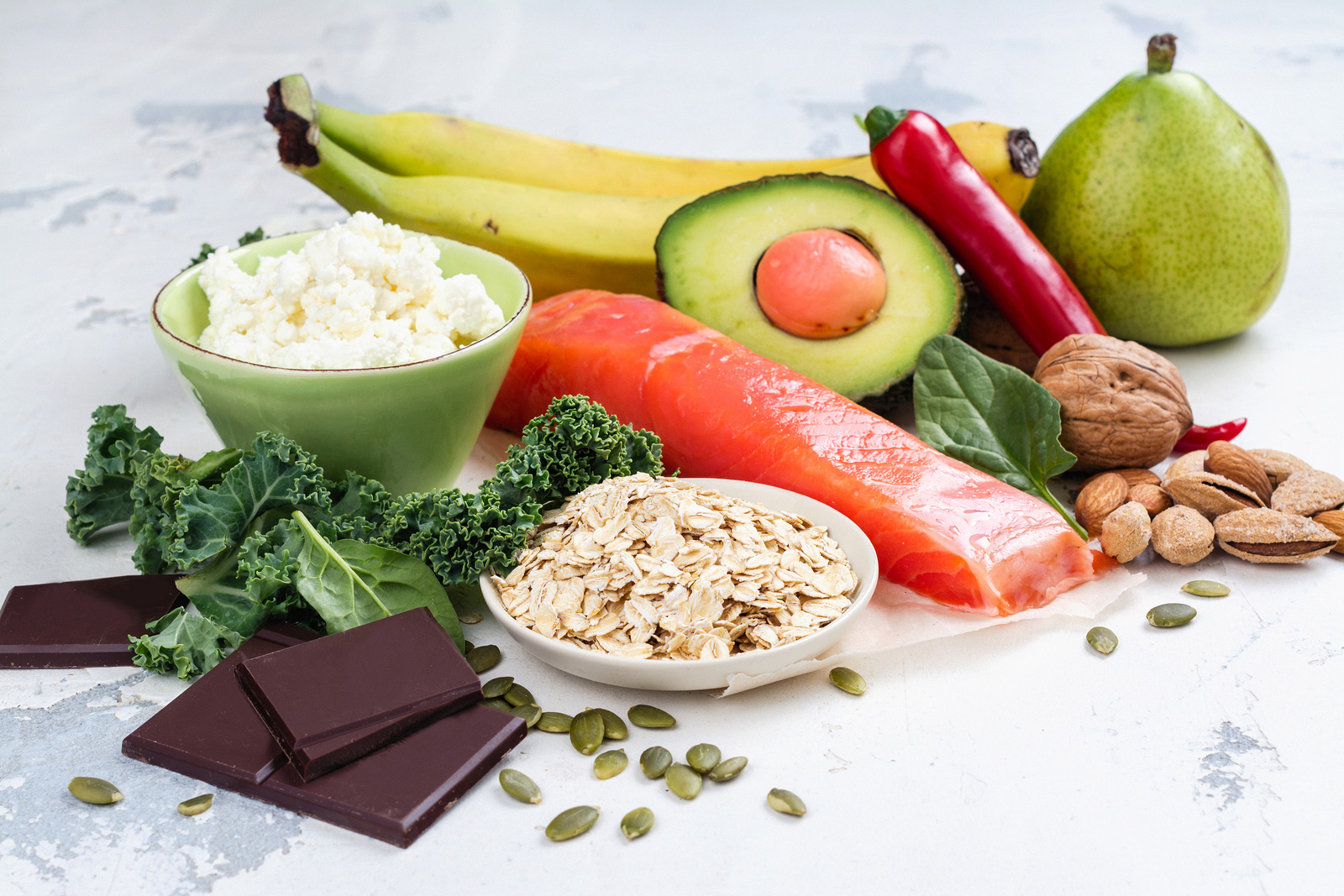Updated 7/26/2020
Kathi came to see me complaining of weight gain around her middle and fatigue that she couldn’t explain. At 40, she wondered if perimenopause was to blame. While the mid-life transition can certainly lead to some health issues, perimenopause and menopause are not diseases. It’s a misguided myth that you simply have to live with these issues. There’s always something at the root of the symptoms – and it’s my job to determine what that is so that women can live their fullest lives.
As I do with all my patients, I spent time asking Kathi some questions. When she revealed that she was also feeling extra hungry lately, had to urinate frequently, and had been experiencing some tingling in her hands, I knew I needed to look at insulin resistance.
What is insulin resistance?
Our metabolism evolved eons ago when the typical diet included fewer (and more complex) carbohydrates. Today most calories in an average diet come in the form of carbohydrates, and most of those are simple carbohydrates — sugars that quickly enter the bloodstream. The body has to release high levels of insulin to keep the level of glucose in the bloodstream from spiraling out of control. But in time the cells quit responding to this signal. At this point the body is considered “insulin resistant.”
One immediate consequence is that the body is forced to release even more insulin. Letting blood sugar get too high is simply not acceptable. When glucose is high, cells can’t absorb and use blood sugar to produce the energy you need.
The resulting excess of insulin in the bloodstream is called hyperinsulinemia. This is a problem because the body wasn’t designed for these prolonged high levels of insulin any more than it can handle high levels of glucose. Elevated insulin levels disrupt cellular metabolism and spread inflammation, increasing risk of prediabetes and, if ignored for too long, type 2 diabetes.
The Centers for Disease Control and Prevention says that about 1 in 3 people in the US have prediabetes. That’s one-third of the population! With that many people at risk for developing type 2 diabetes, it’s critical that you understand insulin resistance and what you can do about it!
The impact of insulin resistance
In addition to prompting cells to absorb glucose, insulin lets the liver know that it should store some glucose in the form of glycogen. When the body’s cells don’t respond properly to insulin, the pancreas makes more. When the pancreas can’t keep up with the extra demand, glucose levels stay high. Without management and/or treatment, you are on the path to type 2 diabetes.
To complicate matters even more, many people don’t notice symptoms until diabetes has developed. And diabetes is just the most obvious consequence of insulin resistance. There are many negative health effects before full-blown diabetes.
Insulin resistance can cause weight gain, excessive hunger or thirst, frequent urination, tingling sensations in hands or feet, fatigue, and frequent infections. It can also cause a skin condition that results in dark patches on the groin, armpits and back of neck, and worsening symptoms of Polycystic ovary syndrome, if you already have that diagnosis, including irregular menstrual cycles, painful periods, and infertility. There’s also an association between high insulin levels and increased risk of heart disease even when diabetes isn’t present.
That’s a lot of reasons to do everything you can to avoid becoming insulin resistant! Although there is a genetic component that part can’t be changed, there are however, many lifestyle changes you can make to reduce your risk. I’ll get to those in a few minutes. But first, let’s take a quick look at another serious issue that can come up for women, especially those experiencing hormonal changes that come with perimenopause and menopause.
Metabolic syndrome, insulin resistance and menopause
Metabolic syndrome, previously known as Syndrome X, is a set of conditions that happen simultaneously which increase risk of heart disease, stroke and type 2 diabetes.
These conditions include abnormal cholesterol or triglyceride levels, high blood pressure, high blood sugar, and excess body fat in the waist area.
What’s the connection to insulin resistance? First, as I said before, insulin resistance results in high blood sugar levels, one of the conditions that puts you at risk. Second, and more importantly for women, is how insulin resistance impacts fat cells.
When cells won’t absorb the extra glucose, the liver has to convert it into fat. Fat cells are loaded with glucose receptors, so this becomes a vicious cycle. Ironically, while the insulin-resistant woman is gaining weight, her cells are actually “starved” for glucose, so she feels exhausted and tends to eat carbohydrate-heavy foods in search of energy.
These extra fat cells are also little estrogen factories, meaning weight gain contributes to the estrogen dominance that causes so many symptoms during the early stages of perimenopause.
Symptoms relating to metabolic syndrome usually predate the onset of menopause, but most women do not complain of them until then. I hear this a lot from the women I see, because they are extra sensitive to any changes in their bodies. Things they’ve shrugged off before seem more urgent to them during this important life transition.
A woman’s health can deteriorate rapidly during menopause with the decrease of estrogen levels in the body. And digestive issues that were once merely a hassle become an affliction when the body’s natural defenses against inflammation (estrogen being one) are depleted.
In addition, women approaching menopause are particularly prone to becoming insulin resistant due to metabolic changes related to fluctuations in adrenal and thyroid secretions. In fact, the decrease of certain hormones, like estradiol, may trigger a resistance to insulin in patients who never experienced it before.
One of the surefire signs of insulin resistance is an expanding waistline. And this can be one of the most distressing problems for women, especially those who have struggled with weight. Often, women turn to diets low-fat diets to try and lose weight. But this is a mistake! Not only is fat NOT the enemy, as so many women have been led to believe, but these diets are often high in carbohydrates which means that if insulin resistance is the issue, they’re making their symptoms worse.
How Do I Know If I’m Insulin Resistant?
The unfortunate truth is that anyone can become insulin resistant — even if she is thin because of the prevalence of refined carbohydrates (white bread, sugar, bagels, pasta, potatoes, sodas, processed foods with added fructose, etc.) in modern diets. In fact, most of us are likely to be somewhat resistant to insulin – it is just a matter of degree.
The more processed and refined food that we eat, the more insulin we require to metabolize it. The more insulin in our blood, the less responsive our cells become. As we age, this continual exposure wears out our tolerance for refined carbohydrates and reduces our sensitivity to insulin.
If you suffer from high cholesterol, high triglycerides, or hypertension, you should get checked for insulin resistance, regardless of your weight or age. If you have high blood pressure, it is likely that you are also suffering from insulin resistance. High blood pressure medication will not cure insulin resistance – it just masks the symptoms.
The good news is that there are steps you can take to avoid insulin resistance and the health issues that come with it – including type 2 diabetes! Here are a few lifestyle tips to get you started.
Tips to avoid developing insulin resistance
While some risk factors, like family history or genetics, can’t be changed, there are plenty of steps that you can take to reduce risk of becoming insulin resistant.
Replace high carbohydrate options with fresh vegetables, lean protein and healthy fats
It’s time to let go of the notion that eating fats makesyou fat. In fact, if you aren’t eating enough healthy fats you may be sabotaging your weight loss efforts! You should avoid trans fats, which are typically found in processed foods, but natural fats are a great, and necessary, choice. It’s best to avoid processed foods as often as you can – especially those high-carb staples like white bread, pastries, white rice, etc. Fill your plate with an array of colorful organic vegetables. Once you discover how delicious these can be, you won’t even miss the other stuff! Protein is also an important part of a healthy diet, and can help keep you full longer, but be careful of portion size and type. Too much protein can cause too much insulin production, and dairy proteins have also been found to increase insulin production.
Get regular physical activity daily
Your muscles are more sensitive to insulin after exercise, helping it do its job more effectively. This means having an active lifestyle can help prevent or reverse insulin resistance. There are so many great options for exercise – walking, running, biking, swimming, and dancing are just a few suggestions. Find something you love to do and build it into your regular routine.
Do your best to lose weight – especially around your middle section
Being overweight is a risk factor for developing insulin resistance. Finding healthy ways to drop those extra pounds is an important step in avoiding insulin resistance. I have a proven program that has helped hundreds of women finally lose the weight they’ve struggled with for years – and keep it off! and they don’t have to starve themselves. You can find more information on that program here.
Spice up your food with cinnamon
Some research has indicated that cinnamon may decrease insulin levels and heighten insulin sensitivity. Add a teaspoon of cinnamon, which is a powerful antioxidant, per day can also bring other benefits. Cinnamon is delicious, and easy to incorporate into oatmeal, yogurt, squash, and other recipes. So, there’s nothing to lose – and possibly a lot to gain!
Take baby steps
Have you ever jumped into a fad diet only to give it up three days later? Or decided you were going to run every day but found yourself too sore and exhausted to continue? Changing your entire lifestyle overnight is not sustainable. Bad habits took time to form, and they take time to break. Start slowly – increase your movement a little each day, replace one thing on your plate with a healthier choice (baked potato instead of fries for instance), or cut out one sugary beverage. Little by little, you’ll find yourself enjoying more energy and better health.
I recommended all of these things to Kathi, and after just a few weeks, she’d incorporated enough of them to feel a lot better. She was sleeping better, had plenty of energy to get through the day, and her waistline had begun to shrink. The progress she saw made her even more determined to stick with the changes she’d made long term. I knew she could do it – and I know you can too! When you change your lifestyle to avoid insulin resistance, you’re setting yourself up for a wonderful future!
Resources:
https://www.mayoclinic.org/diseases-conditions/metabolic-syndrome/symptoms-causes/syc-20351916







